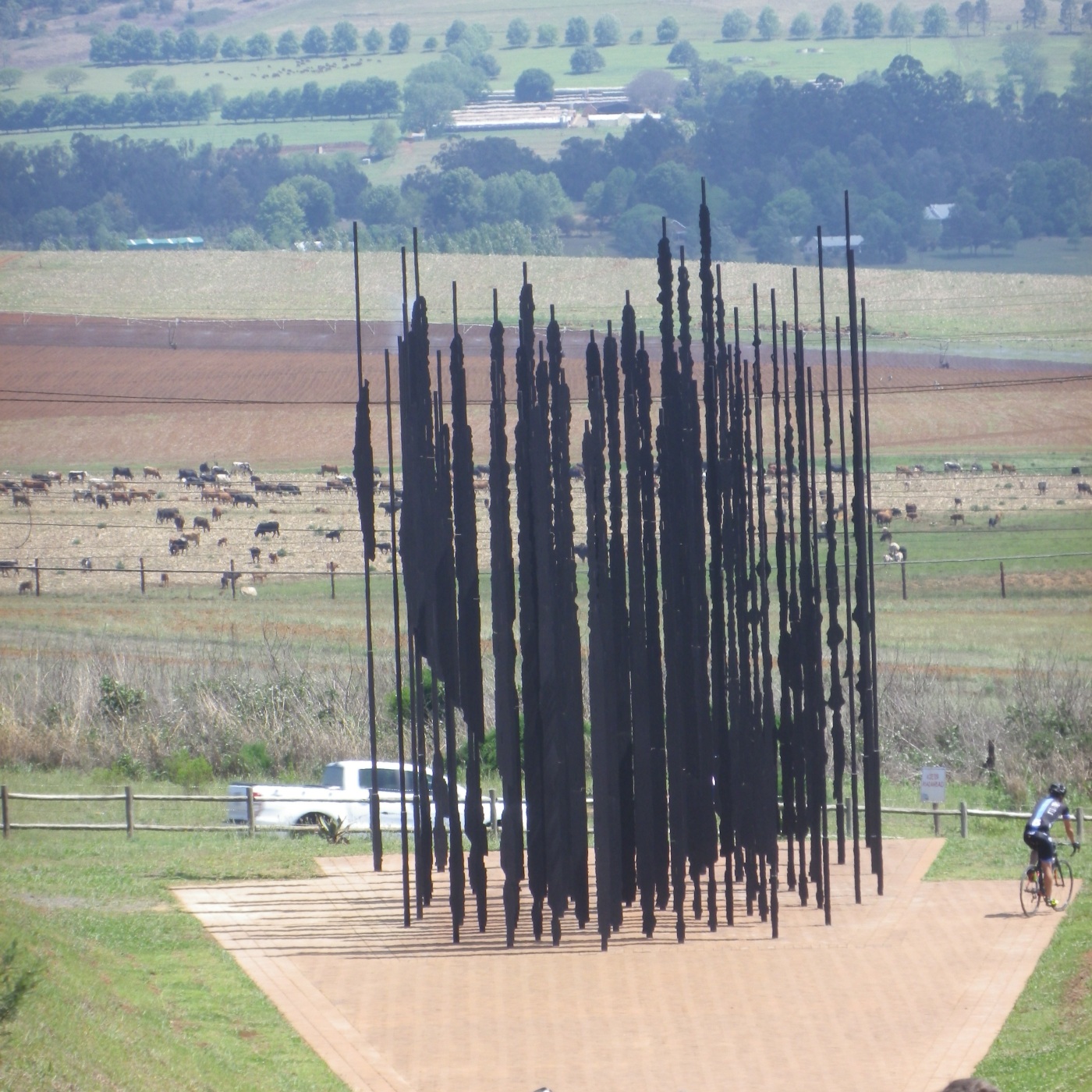The importance of the relationship between human rights and museums was highlighted to me during a recent return to South Africa. A trip to my birth country is always a bittersweet experience – it highlights our collective neglect of humanity, while confirming how far we have come.
About 2 hours out of Durban on the R103 is a small cairn which commemorates the place that Nelson Mandela was captured by armed apartheid police on 5 August, 1962. I’ve visited the site during each of my returns to South Africa. It always struck me as strange that the capture site was commemorated – was it first erected in triumph, or was it later put there to serve as a reminder of the nation’s darker days?
Either way, for a long time the site was small and insignificant – a semi-circular stone wall, no higher than my hip, with a brass plaque. But in the (nearly) three years since my last visit, something extraordinary has been built in the Midlands.

From the R103, all you can see is the sculpture, which looks like a collection of tall, rusted iron poles. Head up the long driveway beside it and you’ll come across a building site – soon to be an enormous museum dedicated to the struggle for South Africa’s freedom. A ramshackle shed sits by the parking lot, with a café under the shade of some large trees. The Apartheid Museum is taking shape – a destination for visitors to engage with Nelson Mandela’s legacy.
In the shed is an interim Museum, telling the story of Nelson Mandela’s life. While there are no artefacts, the cinema and narrative is a haunting glimpse of the struggle. But it’s the iron poles that truly honour the man that South Africans now call Madiba.
To get to it (and you really do want to) you must walk a paved pathway, lined with native plants and spectacular views of the rolling Midlands hills. In the baking sun the walk to the monument feels more like a hike. But we realised that this was intended – it is a literal long walk to freedom, towards something that looks like rusted prison bars. Only at a certain point, 30 metres from the bars, was the symbolism revealed. There, silhouetted against the blue African sky, was Mandela’s face, cleverly rendered between the rough poles. It was a sobering and uplifting sight.

The monument is made up of 50 columns, commemorating the 50 years since the capture. In time, the building under construction will become a museum, with a multipurpose theatre and amphitheatre, and supporting tourism, educational and cultural facilities.
I remember the day that Mandela was elected president of South Africa, and I’ve watched the country evolve in the nineteen years since I moved to New Zealand. Steps forward fill me with joy – it is so good to see glimpses of the vibrant and bright Africa that is waiting in the wings, like the buzzing diversity at the Shongweni Market. But there’s still a long walk to freedom: one white South African responded to my enquiry about chakalaka (a fiery Zulu side dish) as “urgh, African”.
As Tina wrote in a previous story, museums have a vital and important role in discussing, remembering and continuing our struggle for human rights, respect and celebration. I hope that in time this woman will visit the Apartheid Museum and lose some of that revulsion towards a side dish that is burning hot but delicious, as well as the people who make and eat it. Because in the end, we must all walk that long road; and museums can be powerful guides in leading us there. All we have to do is visit.
By Juliet Thomas


Leave a comment